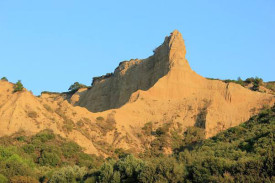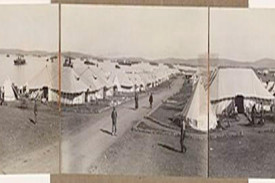General News
1 November, 2025
The ANZAC Gallipoli campaign
The aim of the World War I ANZAC deployment to Gallipoli in modern-day Türkiye was to assist a British naval operation to force the Dardanelles Strait and capture the Ottoman Empire capital, Constantinople (now Istanbul).

Whether known as the Gallipoli campaign, the Dardanelles campaign, the Defence of Gallipoli or the Battle of Gallipoli, it was a military campaign on the Gallipoli (Gelibolu in Turkish) Peninsula from February 19 1915 to January 9 1916.
The Allied powers of Britain, France and the Russian Empire sought to weaken the Ottoman Empire, one of the Central Powers, by taking control of the Turkish straits.
This would expose Constantinople to bombardment by Allied battleships and cut it off from the Asian part of the empire.
With the Ottoman Empire defeated, the Suez Canal would be safe and the Bosphorus and Dardanelles straits would be open to Allied supply ships wanting to access the Black Sea and warm-water ports in Russia.
In February 1915 the Allied fleet failed to force a passage through the Dardanelles.
An amphibious landing on the Gallipoli Peninsula began in April 1915.
The Australians landed at what became known as Anzac Cove on April 25 1915 and established a tenuous foothold on the steep slopes above the beach.
During the early days of the campaign, the Allies tried to break through the Turkish lines and the Turks tried to drive the Allied troops off the peninsula.
Concerted but unsuccessful allied attempts to break through in August included the Australian attacks at Lone Pine and the Nek.
All attempts ended in failure for both sides, and the ensuing stalemate continued for the remainder of 1915.
By January 1916, after eight months' fighting, with approximately 250,000 casualties on each side, the land campaign had been abandoned and the invasion force withdrawn.
The withdrawal was a very successful phase of the campaign, carried out on December 19 and 20 1915 under cover of a comprehensive deception operation.
As a result the Turks were unable to inflict more than a very few casualties on the retreating forces.
The whole Gallipoli operation, however, created 26,111 Australian casualties, including 8141 deaths.
Despite these losses it has been said that Gallipoli had no influence on the course of the war.
Gallipoli was a very costly campaign for both the Allied powers and the Ottoman Empire as well as for the sponsors of the expedition, especially the First Lord of the Admiralty (1911–15), Winston Churchill.
The campaign was considered a great Ottoman victory.
In Türkiye it is regarded as a defining moment in the history of the state: a final surge in the defence of the motherland as the Ottoman Empire retreated.
The campaign became the basis for the Turkish War of Independence and the declaration of the Republic of Turkey in 1923, with Mustafa Kemal Atatürk, who rose to prominence as a commander at Gallipoli, as founder and president.
The campaign is often considered to be the beginning of Australian and New Zealand national consciousness.
The anniversary of the landings, April 25, Anzac Day, is the most significant commemoration of military casualties and veterans in the two countries, surpassing Remembrance Day (Armistice Day).
In fact, in Australia and New Zealand it is regarded as a 'baptism of fire' and had been linked to the emergence of both nations as independent states.
Approximately 50,000 Australians served at Gallipoli and between 16,000 and 17,000 New Zealanders.
[CROSSHEAD]On the ground
Many soldiers became sick due to insanitary conditions, especially involving typhoid, dysentery and diarrhoea.
Thousands were evacuated for illness during the campaign.
The sick were transported from Gallipoli to hospitals in Egypt and Malta as quickly as possible as bases in the area of operations were insufficient.
The proportion of disease casualties to battle casualties was higher in the Gallipoli campaign than in the campaigns of the Western Front.
Allegations were also made about on both sides about hospitals being attacked or bombarded.
With thanks: Sally Bertram, RSL Military History Library. Contact Sally at sj.bertram@hotmail.com or call 0409 351 940.

